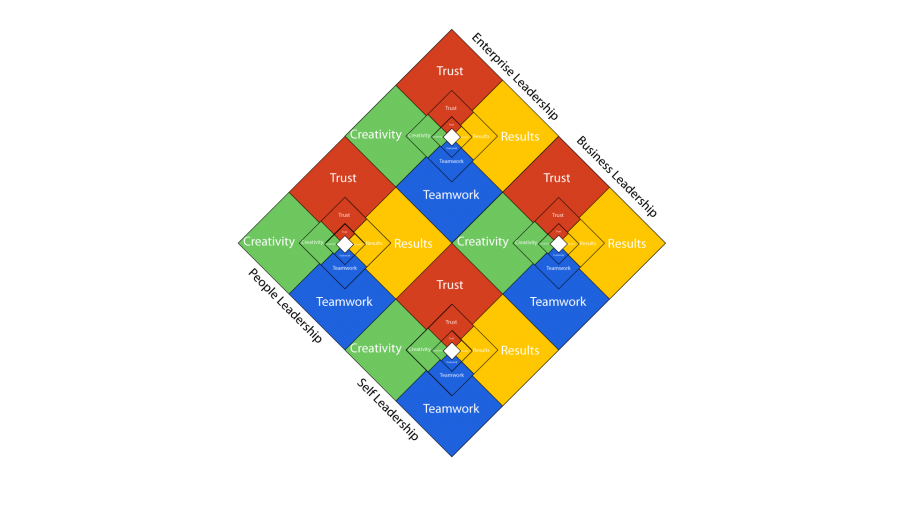We get frustrated when we are unsure how to act, and feel disheartened when we voluntarily or involuntarily act in ways that are not true ourselves. We can get lost while searching for the sweet spot that lies between pattern and surprise, consistency and spontaneity, security and risk, familiarity and freedom, and order and disorder. We can use the idea of fractals, described in the Chaos Theory of Careers, to guide us into satisfying action that is spontaneous and consistent.
When I suggested in my previous post that people act before they think one common concern is that this means acting in an entirely random manner. Indeed I did suggest “committing random acts of contribution”. However underpinning these supposedly random acts is a thread of continuity. The random acts I advocated were not totally random, they were constrained to being acts of contribution.
What I am advocating is to repeatedly apply the same rule “to contribute” over and over again in many different contexts and in many different ways. Through these acts, a pattern of contribution emerges – or in the words of the Chaos Theory of Careers a Fractal pattern emerges.
A Wikipedia definition of a Fractal captures what we need for our purposes. ‘Fractals are typically self-similar patterns, where self-similar means they are “the same from near as from far”…. The definition of fractal goes beyond self-similarity per se to exclude trivial self-similarity and include the idea of a detailed pattern repeating itself.’
So repeatedly applying the value “to make a contribution” whenever and wherever leads to a beautiful fractal of contribution.
We can use Fractals as a way of motivating us to action, in a manner that is consistent but not totally predictable; novel but similar; sort of like old, but new; trait-like, but changing; or in the words of H.B. Gelatt, focused AND flexible.
There are four steps to Fractal Action
Step 1 Define your value rule
This is the rule you are going to apply over and over again. It should be specified in one sentence and should NOT be over-specified. It needs to be self-evidently clear, but not limiting, and it is NOT time-based.
Here are some GOOD examples:
- helping people less well off
- reducing costs by 10%
- providing motivational feedback
- learning one new thing
- trying one new thing
- eating a new food
- listening to a new song
- meeting one more person
- improving my grade score/sales performance/feedback ratings
- all of the above
- improving my performance
- being polite
These are BAD examples
- reaching 100K in sales by August
- getting to 10,000 twitter followers
- helping people by supplying them with more umbrellas
- getting promoted to Senior Management
(You can see that the good “rules” are akin to values or higher order/fuzzy goals, whereas the bad examples more closely resemble the increasingly discredited SMART goals.)
Step 2 Apply your Fractal value to your next action
For any given situation, bring to mind your fractal rule and ask yourself:
“How can I apply this rule in this situation right now?” and then do it!
This step requires Courage, opportunity awareness and creativity to see how your rules are linked to the current situation.
Step 3 Repeat
The key to this process is to repeat the process continually and regularly, in as many situations, if not all the situations you find yourself in.
Step 4 Step back and understand the pattern that is emerging
Look to see patterns emerging over time, consider the outcomes of your actions and also the underlying process. You should see developing a complex, changing, unpredictable pattern that nevertheless has a thread of continuity reflecting how you, your values and skills have connected with the world, and how you have emerged into yourself.
As Aristotle wrote “We are what we repeatedly do; excellence, then, is not an act but a habit”. And that is coaching fractal action for personal development – it’s simple but its complex!
Related Posts








